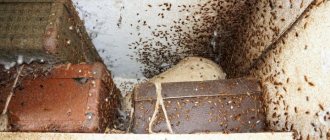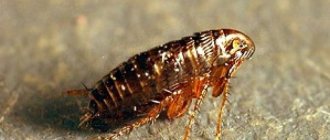Only blue cheese goes well, but in all other cases mold is an extremely undesirable phenomenon. Especially if she appeared on the walls. Dealing with it, it turns out, is not as easy as it seems: it has a habit of returning and spoiling the finishing materials and your mood with its presence. You can learn how to get rid of fungus on the walls in an apartment from the article at the link. And if you live in a large private house, then the situation becomes even sadder, because it is quite difficult to keep track of such a large number of square meters. How to get rid of mold on the walls of a private home once and for all? The most effective options will be discussed today.
- What is mold and why is it dangerous?
- Causes of mold;
- Mold control products;
- Chemicals;
- Folk remedies;
- Conclusion.
What is mold and why is it dangerous?
Mold is understood as special microscopic fungi that invariably appear in musty and damp places in the form of a randomly spreading coating.
At the same time, of course, the appearance of the room is considerably spoiled: it is difficult to find something more repulsive and unpleasant. However, the matter is not limited to anti-aesthetics alone: mold poses a serious danger to human health and it would be very reckless for every sane person to underestimate this aspect. Here is an incomplete list of the body's reactions to contact with a fungus:
- severe allergic attacks;
- gastrointestinal disorders;
- skin diseases and irritations;
- suffocation, cough, asthmatic syndrome.
Base for laying tiles
When covering the walls and surfaces of showers, bathrooms and swimming pool rooms with ceramic tiles, experts recommend using moisture-resistant gypsum boards (GCP) as the basis for this.
Moisture-resistant gypsum boards differ from ordinary plasterboard boards in that they contain antifungal and hydrophobic special additives.
Causes of mold
We have already noted above that the real “paradise” for mold is damp places. Dampness also does not appear on its own initiative and has a specific reason that determines its appearance. Let's look at what these reasons are:
- increased air humidity
- if you often do wet cleaning and dry clothes in the house, then the humidity will always be higher than normal; - cracks in the walls
- they wanted to put up wallpaper so quickly that they safely skipped all the stages of preparing the walls, as a result, spores appeared in the cracks, which continued to spread throughout the entire wall; - condensation on pipes
- if the pipes “sweat”, this is not good: call a specialist and determine the real reason for this, otherwise mold will invariably settle in your home, right next to such pipes; - clogged ventilation
- we love plastic windows so much that do not allow air to pass through, and we completely forget that the hood needs to be cleaned from time to time, otherwise problems cannot be avoided; - sudden changes in temperature
- sloppily designed insulation can play a cruel joke on you at the very first frost.
As they say, it is better to “be on the safe side” than to hastily eliminate the bad influence of microorganisms on your body or your child’s later.
How to determine the presence of fungus
A bluish-green fungus can appear on wood materials, fiberboard, and chipboard.
In cases where visible mold spots have not yet appeared or are hidden (behind furniture, under wallpaper), a symptom may be the presence of settled mold spores:
- specific musty smell;
- increased incidence of respiratory diseases,
- the occurrence of allergic reactions in residents.
Recommendation! The quality of your home is worth checking through a chemical air analysis, environmental impact assessment, or home inspection. To do this, contact a specialized disinfection service or a chemical laboratory.
Mold control products
There is no single correct and effective solution to get rid of mold on the walls once and for all. In one case, one remedy will work perfectly, but in another, it will be powerless. In general, the arsenal of each owner of a private house usually consists of two types of tools:
- specialized chemicals;
- folk
It is important to remember that any available means are good for cleaning the surface from microorganisms, but only consistent adherence to all stages of wall treatment will allow you to protect it from re-infection.
The corners on the upper floors of the building are damp
In private houses or on the highest floors, the walls are often damp due to the attic.
This happens in the following cases:
- the corners turn gray due to violations in the insulation of the attic; dampness and black spots appear most of all in places where the attic floor adjoins the external walls;
- the attic space is poorly ventilated (few ventilation holes, no through ventilation); with good ventilation in the attic, the same temperature is maintained over the entire surface of the roof in the autumn-winter season.
Might be interesting
Waterproofing
How to choose the right floor waterproofing for screed?
Waterproofing
Foundation waterproofing: optimal choice of technology
Waterproofing
Clean water is the key to health, waterproofing concrete…
Waterproofing
Instructions for waterproofing a swimming pool
Dampness in corners on the top floor
Chemicals
- easy to use;
- long lasting effect;
- lack of chlorine in the composition;
- As a rule, they have a pleasant smell.
Common chemicals used to combat mold include fungicidal antiseptics
. Not only will they allow you to eliminate all traces of mold, but they will also help prevent its occurrence. When choosing them, you should pay attention to the purpose: often there are options intended solely for prevention - of course, in your case they will not provide any help.
Most popular options
- Mogel-Fri;
- Metas-Bio;
- Dali;
- Fongifluid;
- Neomid Bio;
- Olympus Stop mold.
How to use
- ventilate the room well before processing;
- cover the furniture and floor with film;
- put on gloves and a mask;
- prepare the wall for cleaning: remove the old finishing material, scrape off the top layer of mold deposits;
- treat the surface with a roller or brush, affecting not only the affected area, but also the entire area adjacent to them;
- let the antiseptic dry and then apply primer, putty, paint or wallpaper the problem area.
Danger to humans
Aspergillus fungus is toxic, so the consequences of infection can be very serious, especially for the elderly and children. In an hour, one square meter releases up to one hundred million spores, which have a depressing effect on the immunity of the person who inhales them. Mold spores enter the body through the skin, respiratory system, or with food if there is mold, for example, on bread. For a weakened immune system, the consequences of such contact may be:
- tearing eyes;
- skin allergies;
- headache;
- gastrointestinal disorders;
- dry cough;
- swelling of the mucous membranes;
- nosebleeds;
- state of anxiety.
The only way to eliminate the health damage caused by black mold is to get rid of it. If the alarming symptoms do not go away, then you should seek help from a doctor. Since long-term contact with spores of black mold fungi is possible:
- asthma;
- pneumonia;
- exacerbation of chronic diseases;
- severe intoxication;
- weakened immunity;
- numbness of the limbs;
- tremor.
This is interesting. The most famous case of death from toxins released by black mold is the fate of some researchers of the tomb of the Egyptian pharaoh Tutankhamun. The patron of the excavations, the first to enter the tomb, Lord Carnarvon, died a mysterious death, and after him, 19 more people who were directly involved in the excavations went to another world. Modern studies of this mystery have agreed that the cause of the tragedy was a black fungus, the spores of which had filled the confined space of the tomb for three thousand years.
Sneezing that seems harmless at first glance may be a reaction to the presence of black mold in the house.
Folk remedies
- always at hand;
- low costs;
- varying degrees of effectiveness.
Despite the fact that the stores are full of special antiseptics that cope well with all types of mold on the walls, many prefer to fight it the old fashioned way, using products that are always at hand. The most common ways to get rid of mold on walls are:
- vinegar;
- hydrogen peroxide;
- Furacilin.
Vinegar
Any table version or a 70% solution will do. The action plan is incredibly simple:
- dampen the cloth in the liquid;
- Apply consistently to mold-affected areas;
- after an hour, rinse with water and dry the walls.
During processing, you should be careful - the caustic vapors of the bite can irritate the eyes and mucous membranes, so it is necessary to ensure good air circulation in the room.
Hydrogen peroxide
This “folk” remedy can be used only in cases where the affected area of the wall of the house is relatively small. Its main disadvantage is the fact that it discolors the surface. In everyday life, a 3% solution
, which does not smell at all and is absolutely safe for humans.
As in the case of vinegar, carefully clean the walls of the house from fungus with a cloth soaked in peroxide, and then rinse with water and dry thoroughly.
Furacilin
These are good tablets if you need to destroy an infection in a wound, but they will also do a great job with mold on the walls of the house.
Therefore, all you need is to crush the tablets in water and treat the “sick” wall of the house. True, you need to take into account the correct dosage and a certain sequence of actions:
- for 0.2 liters of water you will need at least 15 tablets of the drug;
- Before direct cleaning, the wall must be thoroughly dried with a heater or hairdryer.
Cleanliness of ventilation grilles and ducts.
Ventilation duct grilles in apartments or houses must always be kept clean and tidy. This is necessary for the unimpeded movement of air exchange flows in the room through them.
What is important here is, first of all, timely, at least 2 times a year, cleaning of ventilation grilles and ducts mechanically to remove dust and dirt that has settled there.











